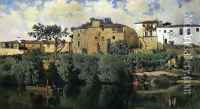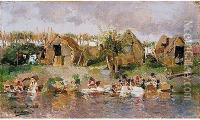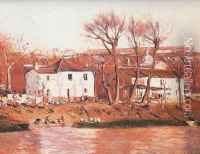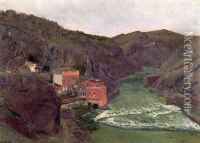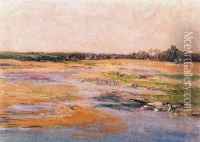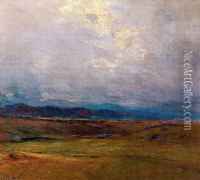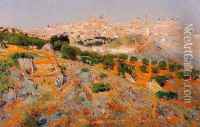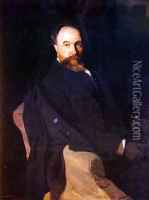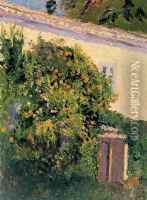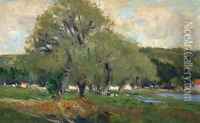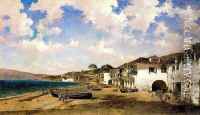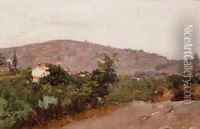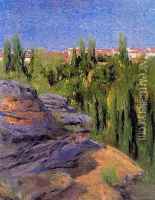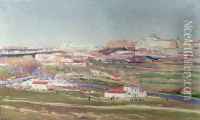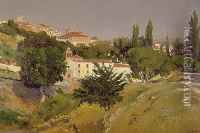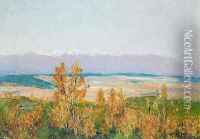Aureliano de Beruete y Moret Paintings
Aureliano de Beruete y Moret was a Spanish landscape painter, art critic, and social figure, renowned for his realistic portrayal of the Spanish countryside, especially the areas around Madrid. He was born on September 27, 1845, in Madrid, Spain, and was deeply influenced by the works of Diego Velázquez. Beruete is often associated with the plein-air painting tradition, which involves painting outdoors to capture the natural light and atmosphere.
Beruete initially studied law and worked in politics, but his passion for painting led him to pursue art as his primary occupation. He studied under Carlos de Haes at the Real Academia de Bellas Artes de San Fernando, where he honed his skills and became deeply influenced by the Barbizon school, a French movement that emphasized naturalism and plein-air painting.
Throughout his career, Beruete's work received considerable acclaim. He was particularly noted for his ability to depict the changing effects of light on the landscape, a skill that earned him recognition as one of Spain's foremost landscape painters of his time. His paintings often feature the Sierra de Guadarrama, which was one of his favorite subjects.
In addition to his painting, Beruete played a significant role in the Madrid art world and was an advocate for modernizing Spanish art institutions. He was involved in organizing exhibitions and was a member of several art societies. Beruete also wrote extensively on art, contributing to the appreciation of artists like El Greco and Velázquez, who were undergoing a reevaluation at the time.
Aureliano de Beruete y Moret's legacy includes not only his contributions to Spanish art but also his efforts to preserve and promote Spain's artistic heritage. He passed away on January 5, 1912, in Madrid. His son, Aureliano de Beruete y Sorolla, was also a painter and continued his father's tradition of painting the Spanish landscape.
